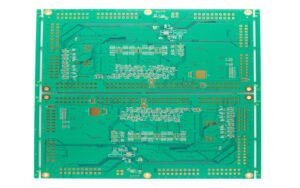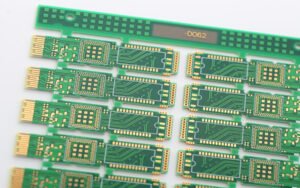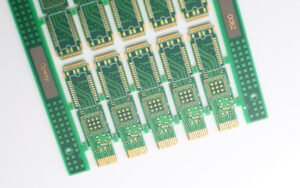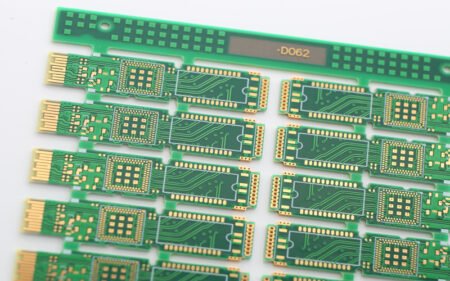An optical module communication PCB (Printed Circuit Board) refers to the circuit board used in optical communication modules. Optical modules are electronic devices that use light signals to transmit and receive data over optical fibers. They are commonly used in telecommunications, data centers, networking equipment, and other applications where high-speed, long-distance data transmission is required.
The PCB used in optical modules is specifically designed to accommodate the components and circuits necessary for optical communication. These PCBs typically include:
1. Optical Components Mounting: Optical modules contain various components such as lasers, photodiodes, lenses, and other optical elements. The PCB provides the platform for mounting and connecting these components.
2. High-Speed Signal Routing: Optical communication involves high-speed data transmission, often at rates of several gigabits per second or higher. The PCB is designed with controlled impedance traces and signal integrity considerations to ensure reliable transmission of these high-speed signals.
3. Signal Conditioning and Processing Circuits: Optical modules may include signal conditioning and processing circuits such as amplifiers, equalizers, serializers, deserializers, and clock/data recovery circuits. These circuits are integrated into the PCB to prepare and process the optical signals for transmission and reception.
4. Power Management: The PCB may incorporate power management circuits to regulate and distribute power to the various components of the optical module, ensuring efficient operation and optimal performance.
5. Control and Communication Interfaces: Optical modules often include interfaces for controlling and configuring the module, as well as for communicating with external devices or network equipment. The PCB may include microcontrollers, interface circuits, and connectors for these purposes.
6. Thermal Management: Optical components can generate heat during operation, which can affect performance and reliability. The PCB may include thermal management features such as heat sinks, thermal vias, and thermal pads to dissipate heat and maintain optimal operating temperatures.
Overall, the optical module communication PCB plays a critical role in the functionality, performance, and reliability of optical communication systems by providing the necessary infrastructure for integrating and controlling optical components and circuits. These PCBs are designed and manufactured with precision and attention to detail to meet the demanding requirements of optical communication applications.












